
In today’s digital world, it is not enough only to have a website. You need to understand what your visitors do when they visit your site. This is where Web Analytics becomes your best friend.
Web Analytics means collecting and analyzing data about how people use your website. This information lets you see which pages are popular, where users leave your site, and how you can improve their experience.
If you know how to read the data correctly, you can increase your sales, improve conversion rates, and grow your business faster.
Web Analytics may seem a little complicated. But once you learn the basics, you will see how easy and powerful it can be.
Today, with new technologies like artificial intelligence and machine learning, many Web Analytics tools can even automatically provide smart insights.
In this article, we’ll help you understand Web Analytics, why it matters, what key metrics you should track, and which tools can make your work easier.
Let’s dive in if you’re ready to take your website to the next level!
What is Web Analytics?
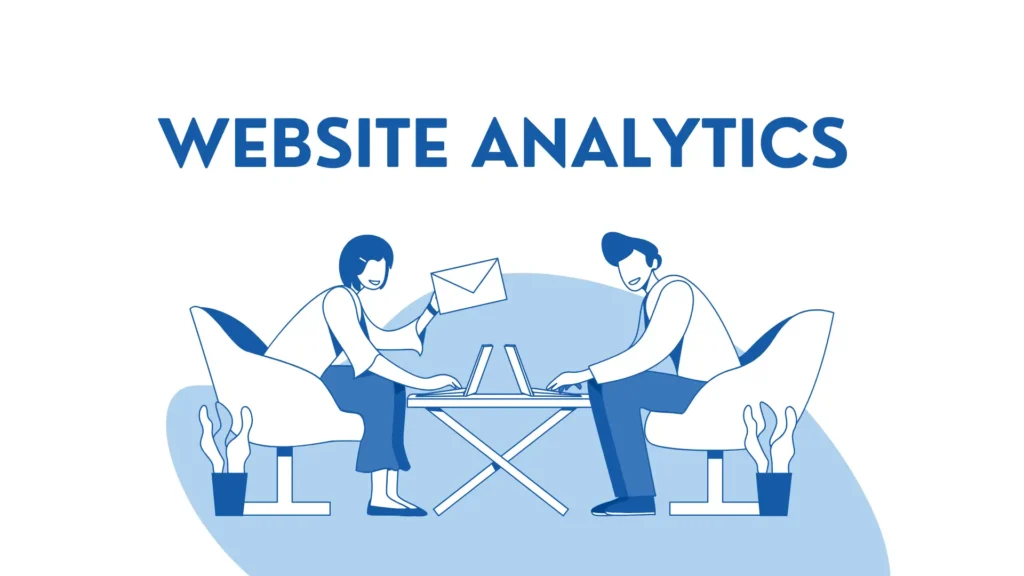
Web Analytics collects, measures, and analyzes data about how people use your website. Simply put, it helps you understand what visitors do when they visit your site, so you can make better decisions to improve their experience.
Imagine you open a small shop. You watch how customers walk inside, which products they pick up, and where they leave without buying anything. Web Analytics does the same thing for your website, but with real data.
Using Web Analytics tools similar to Google Analytics, you can answer important questions, such as:
- How many people visit your website?
- Where do they come from — Google search, social media, or ads?
- Which pages do they visit most?
- How long do they stay on each page?
- Where do they leave the site?
- By understanding these patterns, you can improve your site’s design, fix problems, and create a better User Experience (UX) for your audience.
For example, when I first launched my personal blog, I had no idea which articles were popular. After installing Google Analytics, I found that my “UX Design” guides were getting 70% more traffic than others. So, I created more UX content, and my traffic doubled in three months!
Today, Web Analytics is not just for big companies. Small businesses, content creators, e-commerce owners — everyone can use it to grow smarter. Tools like Woopra or Hotjar offer deeper insights, like how users move their mouse on the page or why they leave a shopping cart.
In short, Web Analytics helps you move from guessing to knowing. And when you genuinely know your visitors, you can build a website they love to visit again and again.
What Are the Benefits of Web Analytics?
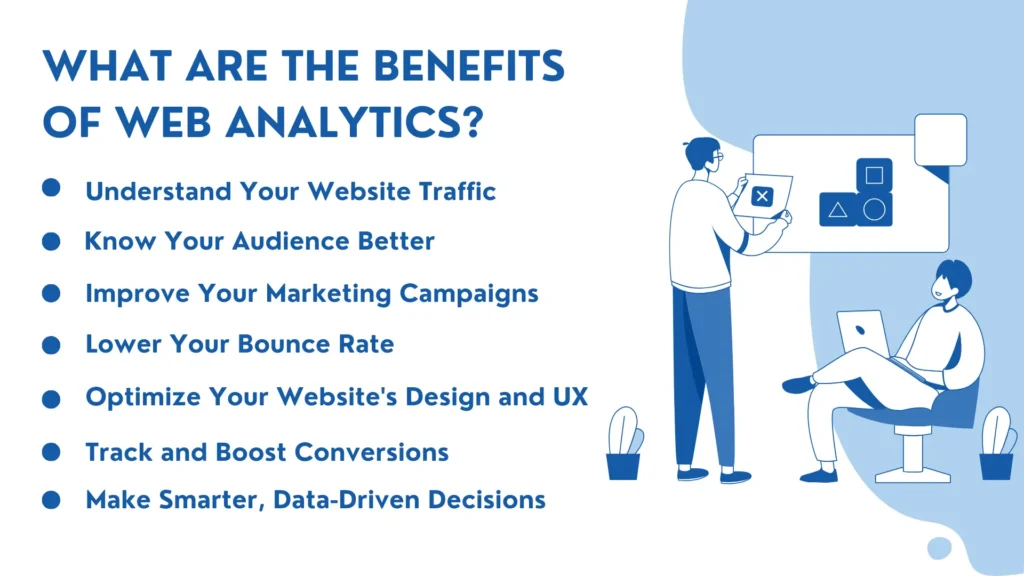
If you want to grow your website or online business, having a nice-looking site is not enough. You need to understand what’s happening behind the scenes — who’s visiting, what they’re doing, and why they’re leaving. This is where web analytics becomes your best friend.
Let me walk you through some of the most essential benefits of web analytics in a relatable and straightforward way:
1. Understand Your Website Traffic for Web Analytics
Web analytics helps you track the number of visitors to your site, where they come from (Google, social media, email, etc.), which pages they view, and how long they stay.
For example:
On one of my blogs, I saw that many visitors were leaving a certain page within 5 seconds. After checking the data, I realized the page was loading too slowly on mobile. I fixed the issue, and bounce rates dropped noticeably.
With this kind of insight, you don’t have to guess — you’ll know exactly what’s working and what’s not.
2. Know Your Audience Better
Knowing your audience is the key to better content and marketing. With web analytics, you can learn things like:
- What kind of content do your users like
- Which device do they use (mobile or desktop)
- When they’re most active
- What country or city are they from
Personal story:
After analyzing my audience data, I noticed most of my traffic was from mobile users. So, I started testing my designs more carefully on smaller screens, and the results were fantastic. User engagement went up, and I got more newsletter signups.
3. Improve Your Marketing Campaigns
Have you ever run an ad or shared a post on Instagram and wondered if it worked? Web analytics shows you exactly which campaigns bring traffic and conversions.
You can create custom tracking links (UTM links) to see which posts or ads drive the most action. This helps you stop wasting time and money on things that don’t work — and double down on what does.
4. Lower Your Bounce Rate
Bounce rate means how many users leave your website after viewing just one page, without clicking anything else.
If your bounce rate is high, something may be wrong:
- Maybe your page is confusing
- Perhaps it loads too slowly.
- Or maybe users expected something else based on your headline.
By checking your bounce rate in an analytics tool (like Google Analytics), you can identify pages that need improvement and fix them.
5. Optimize Your Website’s Design and UX
Web analytics isn’t just about content — it also shows how people use your site, which helps with user experience (UX) and design.
For example, tools like heatmaps show you where people click the most. Users may never scroll down to see your call-to-action button, so you might want to move it higher up.
Also, since most people browse websites on their phones, it’s smart to check how your site looks and works on mobile. After seeing how many mobile users struggled with the old layout, I redesigned my homepage. That simple change increased time-on-site by 30%.
6. Track and Boost Conversions
Your website probably aims to sell a product, get people to sign up, or download an app. That’s called a conversion.
With web analytics, you can track:
- How many people take that action
- Which pages lead to the most conversions
- Where people drop off before converting
Once, I noticed that many users were quitting at the checkout page. It turned out the process was too long and confusing. After simplifying the steps, my conversion rate improved by over 20%.
7. Make Smarter, Data-Driven Decisions
One of the most significant benefits of web analytics is that it takes the guesswork out of your decisions.
Instead of asking, “What do I think users like?”, you can ask, “What do the data tell me?”
In the events where you’re launching a new product, updating your content strategy, or redesigning your homepage with the help of using real data can help you feel more confident and often yield better results.
Final Thoughts
Web analytics is not just for big companies or tech experts. It’s a very simple but powerful tool providing you with a clear picture of your users, your content, and your results.
To summarize, here’s what web analytics helps you do:
- Understand your visitors and where they come from
- Improve your content and website experience
- Track and boost conversions
- Make smarter marketing choices
- Grow your business with confidence
No matter the size of your website, if you want to grow, start using web analytics. The sooner you begin, the faster you’ll learn what works — and what doesn’t.
Web Analytics Tools – Simple Tools to Understand Your Website Better
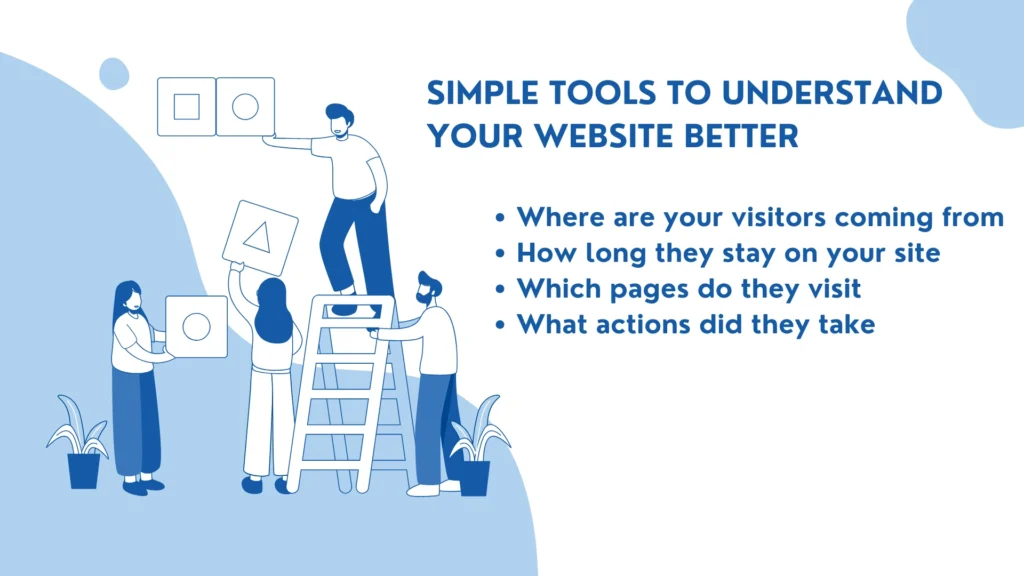
If you want to improve your website, first, you need to understand how people use it. That’s precisely what website analytics tools help you do.
These tools show you helpful information like:
- Where are your visitors coming from
- How long they stay on your site
- Which pages do they visit
- What actions did they take
With this information, you can see what’s working well and what’s not.
Why You Should Use Website Analytics Tools
Think of it like this: Imagine you open a small shop. Wouldn’t you want to know how many people walk in, what they look at, and what makes them leave without buying? That’s what analytics tools do — but for your website.
When I first launched my blog, I used no analytics tools. I had no idea which posts people liked or how they found my site. After I installed Google Analytics, I discovered that most of my visitors came from LinkedIn, not Google, as I expected! That helped me focus more on sharing content there, which doubled my traffic in a few weeks.
Main Types of Website Analytics Tools
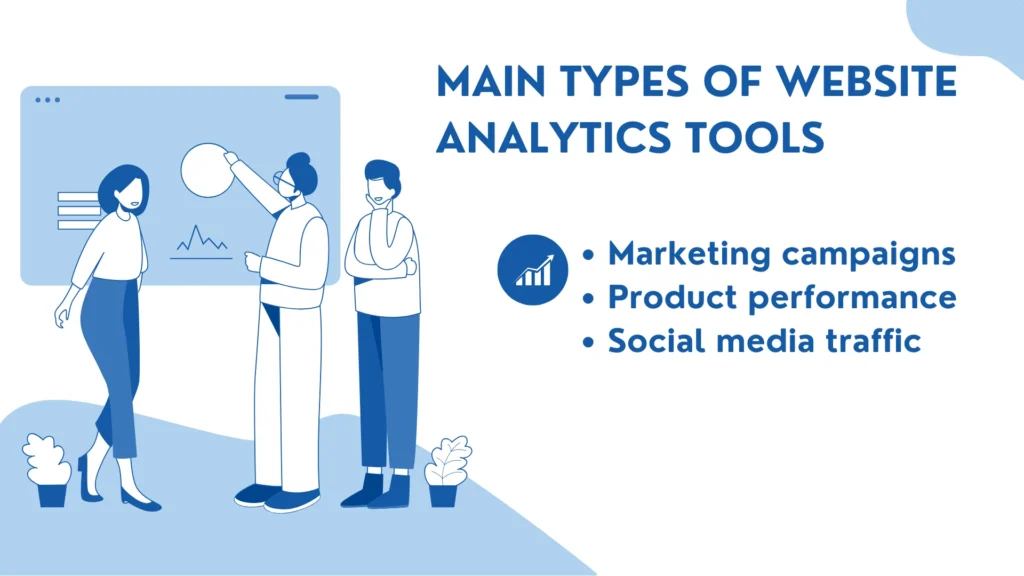
There are two main types of tools based on how they collect data:
1. On-site (or Hosted) Tools
These tools track what happens on your website. You install a small piece of code on your pages. They give you detailed and accurate reports about your users.
Examples: Google Analytics, Matomo, Clicky
2. Off-site (or Third-party) Tools
These tools collect data from other sources, like search engines and browser toolbars. They’re great for competitive analysis — for example, if you want to know how your traffic compares to your competitors.
Examples: SimilarWeb, Semrush
Extra Benefits
Besides website tracking, many of these tools also help you analyze:
- Marketing campaigns
- Product performance
- Social media traffic
So, if you’re running a small business, a personal blog, or a full e-commerce store, using a website analytics tool is one of the smartest things you can do. It leads you making reasonable decisions based on real data not guesses.
Conclusion:
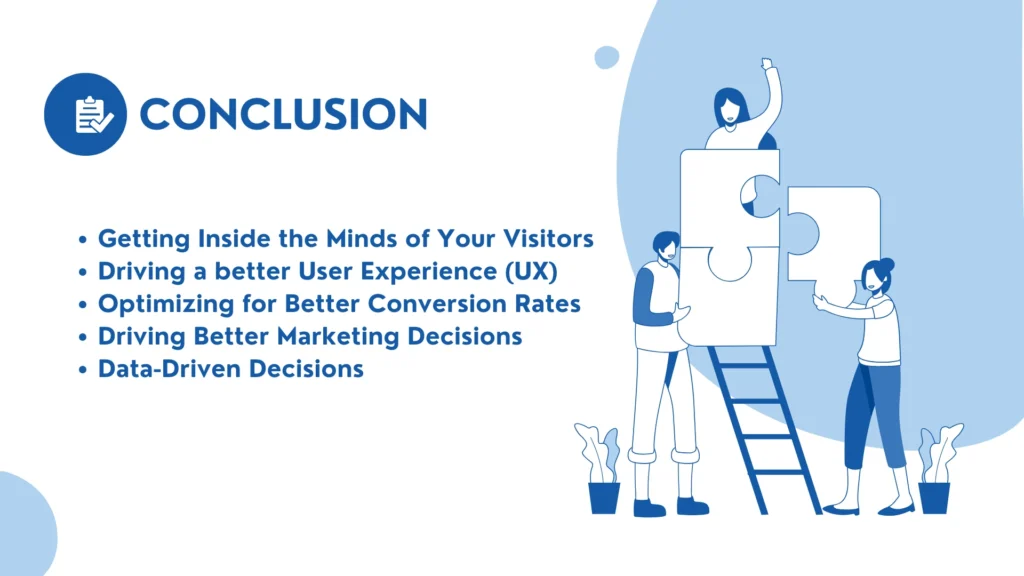
Web analytics provides perfect insights into both your website’s performance and your visitors’ behavior. In Today’s modern digital world, it’s not enough at all to just have a website, you must also know how users engage with it. Which pages are capturing your visitors’ attention the most? Where is the audience losing interest or dropping off? What’s encouraging them to click, sign up, or buy? Web analytics will provide answers to all these questions, equipping you with the insights needed to make smarter decisions and improve your website’s performance.
To sum up, web analytics can truly assist with below:
- Getting Inside the Minds of Your Visitors: You’ll gradually gain insights regarding where your visitors are coming from, whether it’s search engines, social media, or other sources, what pages they explore more, and how long they stick around in your website. Having this information, you can fine-tune your site and provides your audience with content that truly resonates with their needs.
- Driving better User Experience (UX): By understanding the pattern visitors are moving through your site, you can spot design issues or areas that cause confusion. Fixing these problems helps create a smoother, more enjoyable experience, one that encourages people to return.
- Optimizing for Better Conversion Rates: Whether you’re looking to sell products, grow your newsletter list, or increase downloads, web analytics helps you see which pages are converting and where your website visitors are falling off. With these insights, you can make smart adjustments to boost your conversion rates and get more value from every visit.
- Driving Better Marketing Decisions: Web analytics tools can track the effectiveness of your marketing campaigns. You’ll know which ads, social media posts, or email campaigns work best. By investing more in what works and cutting back on what doesn’t, you can maximize your marketing efforts and increase your ROI.
- Data-Driven Decisions: Web analytics removes the guesswork from decision-making. Instead of making assumptions, it allows you to rely on real data. Whether you’re picking a content strategy, improving your site’s mobile experience, or planning a homepage redesign, using data to guide your choices leads to smarter, more effective results.
An Awesome fact about Web Analytics
The awesome fact regarding web analytics is that it’s not just for big businesses with large teams. Anyone with a website, from small bloggers to e-commerce owners, can benefit from these tools. Once you start tracking your website’s performance, you’ll see patterns and trends that will guide you in making the best choices for your site and business.
Effectively using web analytics, you can move from making random guesses to making informed decisions based on real data. The more you analyze and improve your website, the more your website’s performance will improve, leading to better user engagement, increased traffic, and higher conversion rates.
To conclude, web analytics is a game-changer for anyone looking to grow their online presence among millions of websites. You’ll gain a much deeper understanding of your audience, refine your website, and drive your business to new heights using web analytics tools today. The sooner you start, the faster you’ll see improvements and the better equipped you will be to make smarter decisions that lead to real business growth.
Frequently Asked Questions (FAQ)
1. What is the exact definition of Web Analytics?
To make the long story short, Web analytics is the process of collecting, measuring, and analyzing data to understand how visitors interact with your website. It helps you track user behavior, such as which pages they visit, how long they stay, and where they come from, allowing you to improve your website’s performance by making informed decisions.
2. Why is Web Analytics important for my website?
Web analytics gives you valuable insights into your website’s performance. It helps you understand what’s working, what sections need improvement, and how to optimize the user experience, causing an increase in conversions, boosting engagement, and growing your business.
3. How can Web Analytics improve my website’s user experience?
Web analytics analyzes the way users navigate your site, enabling you identify areas that may confuse or frustrate visitors. Using this data, you will be able to make changes in order to improve site design, navigation, and usability, ensuring a better user experience and increasing the likelihood of their return.
4. Using Web Analytics, what data types are possible to be tracked?
Web analytics tools can track various types of data, including:
- Visitor traffic: Where users come from (search engines, social media, etc.)
- Page performance: Which pages are visited the most, and how long do users stay on them
- User behavior: What actions do visitors take, such as clicking buttons or making purchases
- Conversion rates: How many users complete a desired action (e.g., buying a product, signing up for a newsletter)
5. Can Web Analytics help me improve my marketing efforts?
Yes, web analytics is invaluable for improving marketing strategies. You will be able to track the effectiveness of your campaigns, identify which ads or posts are driving traffic, and measure conversion rates. This enables you to optimize your marketing spend, focus on what’s working, and abandon what’s not.
6. How does Web Analytics help with improving conversion rates?
Web analytics shows you where visitors drop off in the conversion process. For example, if many users leave during the process of checkout, there are definatley areas for improvement to be identified, such as simplifying the steps or fixing technical issues. By making these adjustments, you can improve your conversion rate and achieve your business goals.
7. Is Web Analytics used only in large businesses?
Not at all! Web analytics is valuable for businesses of all sizes. Whether you have a personal blog, a small e-commerce site, or a large enterprise, web analytics tools provide insights that help you improve your website and grow your business.
8. Is any technical knowledge required to use Web Analytics tools?
Most of the famous web analytics tools, like Google Analytics, are basic, user-friendly, and do not require advanced technical knowledge. However, understanding the basic principles and interpreting the data effectively can help you make the most of these tools. Many tools also offer tutorials and support to help you get started.
9. What popular Web Analytics tools include?
Some widely used web analytics tools are as follows:
- Google Analytics: One powerful, free tool that offers detailed insights into website performance.
- Hotjar: Provides heatmaps and session recordings to track user behavior in real time.
- Woopra: Focuses on tracking customer journeys and real-time analytics.
- Matomo: An open-source alternative to Google Analytics that offers complete data ownership.
10. How can I start using Web Analytics on my website?
You must install a web analytics tool similar to like Google Analytics on your website to get started. Most tools provide easy-to-follow instructions for installation. Once set up, you can begin tracking the website’s performance and get to know valuable insights into your audience’s behavior.
